[javascript protected email address]
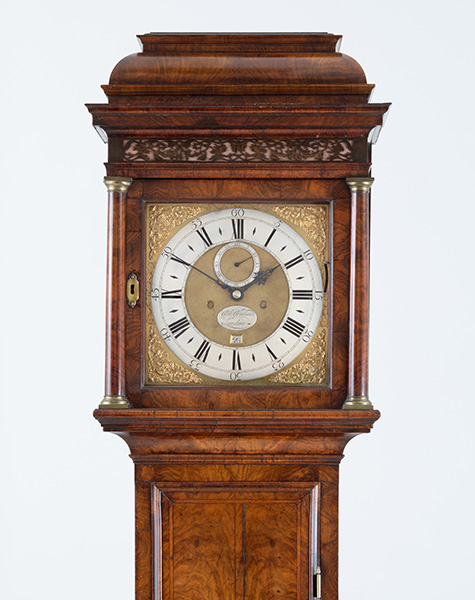
George Graham, London No. 661

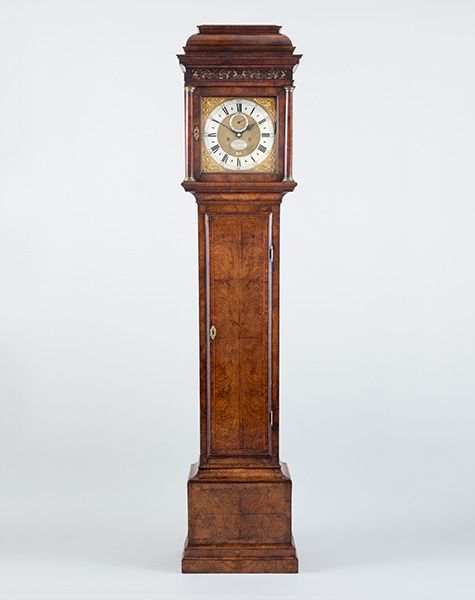
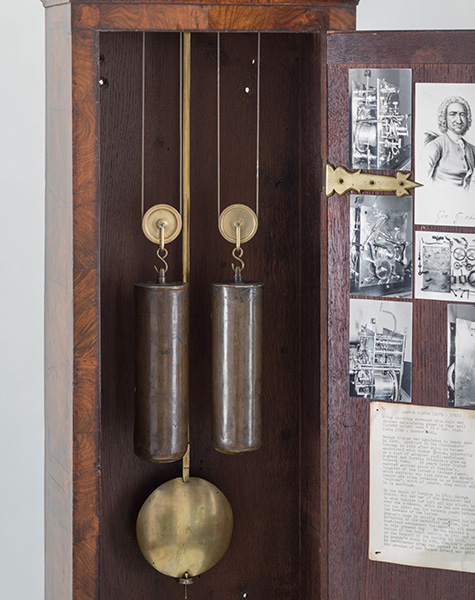
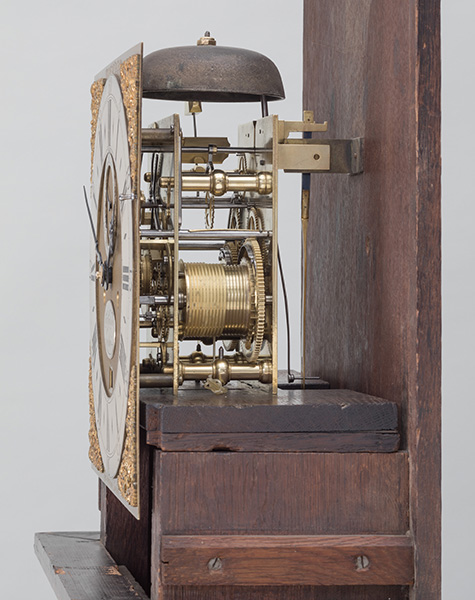
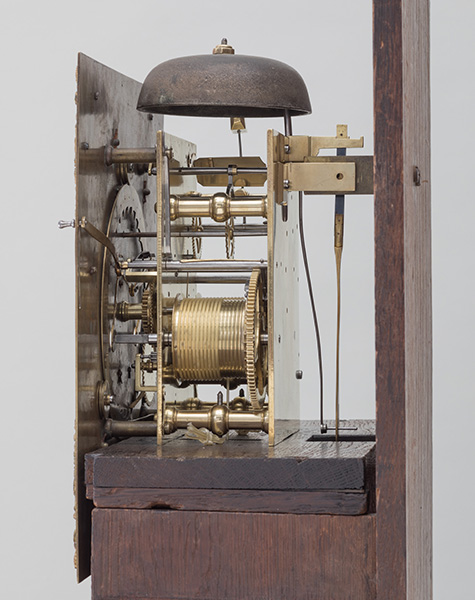
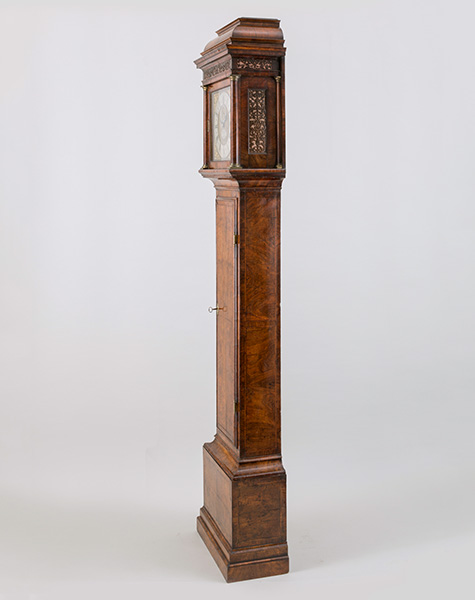
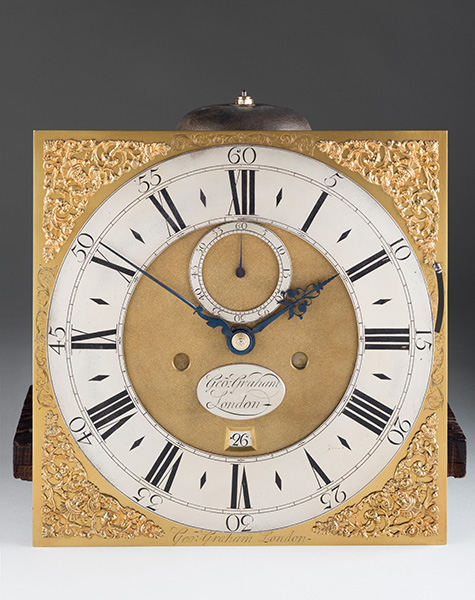
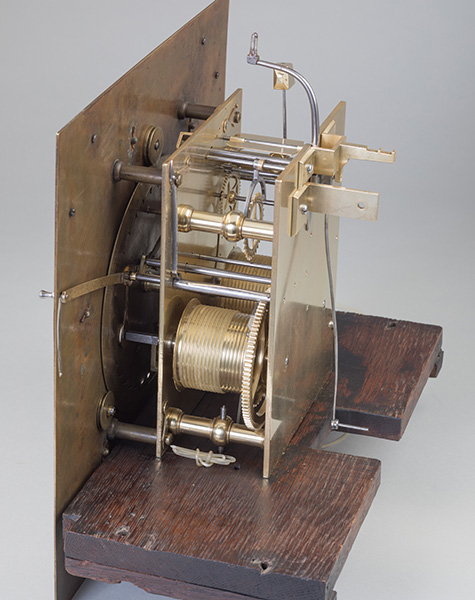
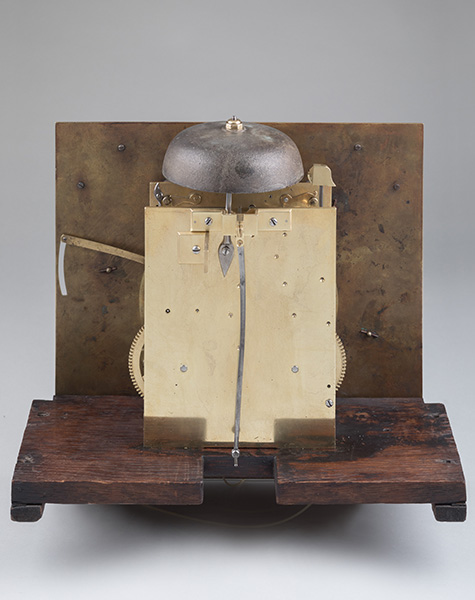
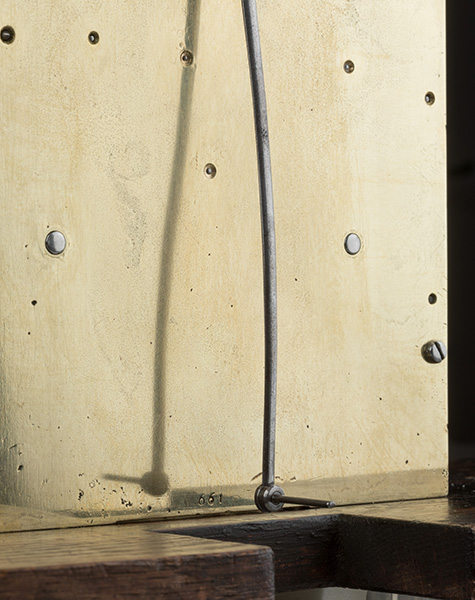
Circa 1725
Sold
8 feet
A very rare and handsome figured walnut 8-day longcase clock with numbered case and movement together with original weights and pendulum. CASE The fine quality case has a double-footed plinth with handsome walnut veneers matching the trunk door with herringbone line inlay. The trunk door has lovely walnut veneers and the original robust brass hinges - the front leading edge of the door is clearly numbered 661. The hood has brass-capped three quarter columns flanking the dial beneath well-pierced walnut sound frets and a fine quality caddy top. DIAL The very handsome 12 inch square gilt-brass dial is signed Geo: Graham London on the bottom edge beneath the silvered chapter ring which has Roman and Arabic numerals, typical lozenge half hour makers and the original finely pierced and shaped blued steel hands. The well-matted centre has a large diameter silvered seconds ring with blued steel hands and a calendar aperture with pin-hole adjustment beneath a silvered brass oval plaque signed Geo: Graham London. The winding holes have the original matted shutters, which are operated via a steel lever to the right side of the dial by chapter III. The corners of the dial are applied with double-screwed Indian-mask-and-foliate gilt-brass spandrels with foliate engraving between. The dial plate is secured to the movement front plate by four latched dial feet. MOVEMENT The very fine quality movement is almost entirely original throughout. The thick brass plates are held together with latches by five robust baluster pillars. The going train has an anchor escapement with the original tapered steel crutch and the original pendulum, which retains the massive brass bob with its calibrated silvered rating nut. The strike train operates via a lovely slender steel rack system on the front plate and strikes the hours on the bell raised on a steel stand above the plates. The backplate is correctly numbered 661 on the base of the backplate and the movement is secured on the case on the original seatboard and by means of a brass movement bracket screwed to a T-bar at the top of the oak backboard. Provenance 1964, with G.E. Bell, clock dealers, Winchester Literature Evans, Carter & Wright, Thomas Tompion 300 Years, 2013 page 609 Jeremy Evans, Thomas Tompion at the Dial and Three Crowns, 1993, page 84
